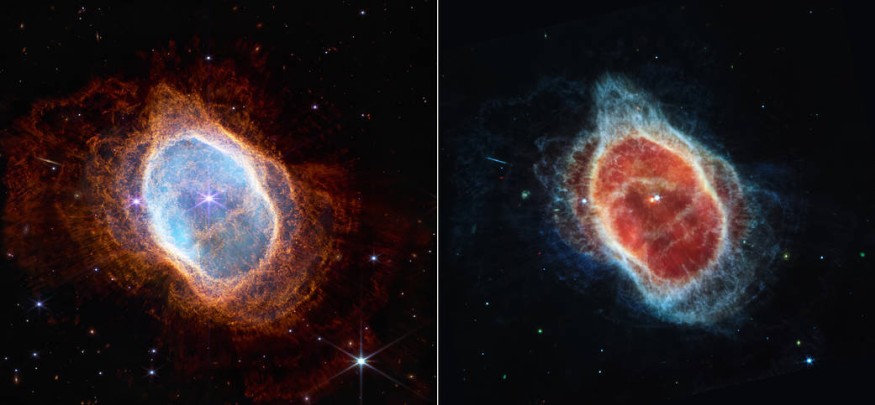You have probably seen the Southern Ring Nebula's first full-color photos from the National Aeronautics and Space Administration's (NASA's) James Webb Space Telescope. Yet, were they real? Of course!
But were they precisely as Webb photographed them in a single frame, much as you would when using your phone to take a picture? Unfortunately, no!
Several accounts claim that Webb's engineers had to significantly edit the pictures we saw a lot of before they were published, and for quite obvious and rational reasons.
So what is happening?
NASA's James Webb Space Telescope 'Colored' Images
The job of the Webb team's picture developers, according to Gizmodo, is to transform the telescope's infrared imaging data into some of the most colorful images of space ever viewed by the general public.
The picture creators assign different infrared wavelengths to various hues in the spectrum, including blue, red, yellow, and others.
Forbes claims that although the Webb team's processed photographs do not match what the telescope actually viewed, they are still not wholly wrong.
In an interview with Gizmodo, Joe DePasquale, a senior data picture developer at the Space Telescope Science Institute, stated that they are attempting to shift people's perceptions of the precise image of the cosmos since it is more complex than that.
The Large Magellanic Cloud was visible in an orange hue in Webb's initial test photographs, which also assisted in aligning the mirrors.
Early color photographs were not representational since one employed a monochromatic filter and the other converted infrared light into the red and yellow visible color bands.
This indicates that the researchers could identify some of the cloud's captured characteristics. With the James Webb Space Telescope, NASA now provides vibrantly colored photographs, such as the most recent picture of the Cartwheel Galaxy.
Because many of the fascinating things in space shine brilliantly in x-rays, ultraviolet light, and even radio waves, astronomy is often conducted outside of the visible range.

The Webb Telescope was built to observe infrared light with wavelengths shorter than microwaves but longer than visible red light.
Infrared Light on Photos Explained
In the universe, infrared light can aid in penetrating dense clouds of gas and dust. According to NASA, this enables researchers to observe space's undiscovered mysteries.
The light from the early cosmos that has been distorted due to the expansion of the universe intrigues scientists. What was formerly ultraviolet or visible light may now be infrared or redshifted light.
According to DePasquale, the tools they have created can let them see farther would "go beyond what our eyes are capable of doing to see light that our eyes are not sensitive to, and to resolve objects that we can probably see with just our eyes."
DePasquale noted that his goal is to preserve the data's original richness of color and intricacy while bringing out the most specific information possible.
Before they can be converted into visible light, the Webb Telescope's raw pictures must first be downscaled since they are dense with data.
Additionally, artifacts like reflections from brilliant stars that impact the telescope's detectors must be removed from the photos. Often, the photos seem like black rectangles with white spots strewn all over them before they are cleaned.
RELATED ARTICLE : NASA Released the Latest Cartwheel Galaxy Image Captured by the James Webb Space Telescope
Check out more news and information on Space in Science Times.











